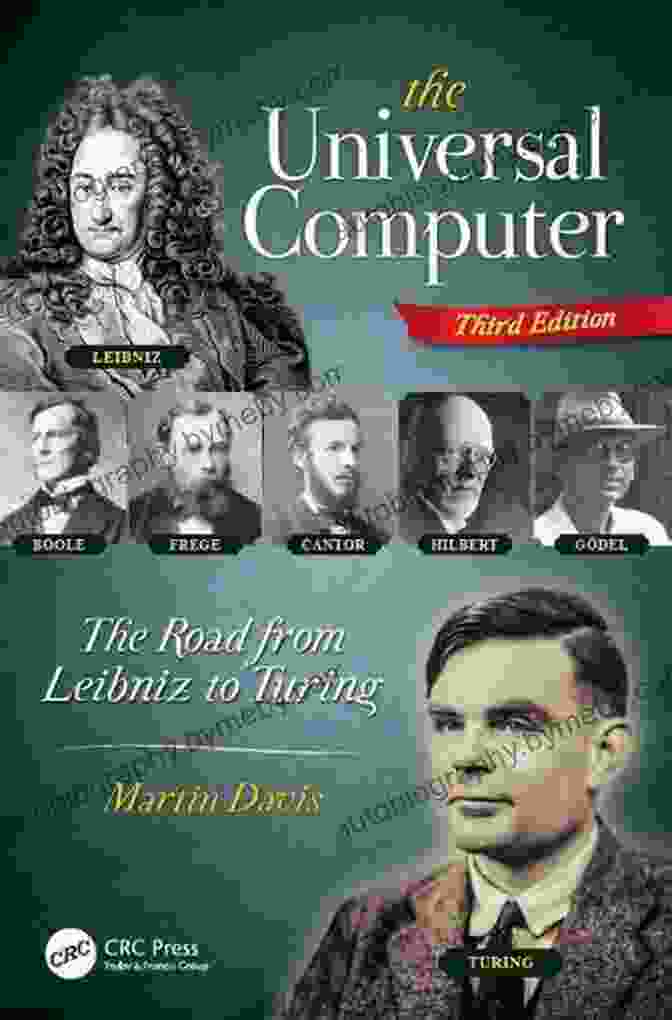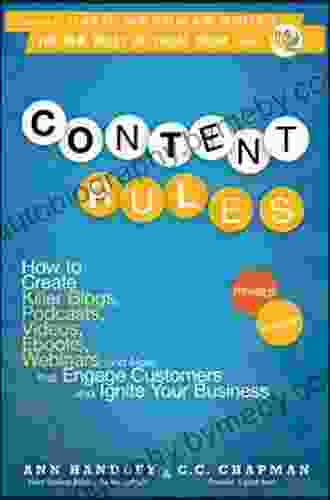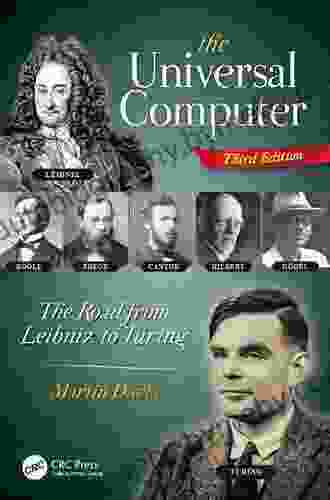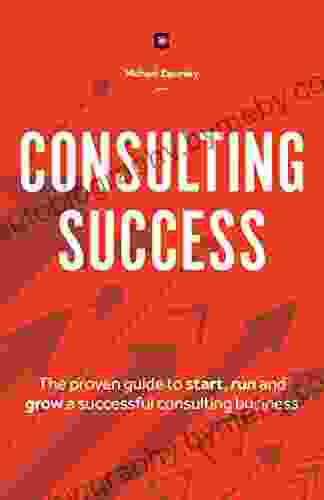The Road From Leibniz to Turing: A Journey Through the History of Computing


The Road From Leibniz to Turing is a comprehensive history of computing, from the earliest mechanical devices to the modern digital age. Author Robert S. Woodbury provides a detailed and engaging account of the people, ideas, and inventions that have shaped the development of computing.
4.3 out of 5
| Language | : | English |
| File size | : | 5615 KB |
| Text-to-Speech | : | Enabled |
| Screen Reader | : | Supported |
| Enhanced typesetting | : | Enabled |
| Print length | : | 238 pages |
The book is divided into three parts. The first part covers the prehistory of computing, from the abacus to the mechanical calculator. The second part covers the development of the computer as a general-purpose machine, from the Analytical Engine to the ENIAC. The third part covers the development of the digital computer, from the EDSAC to the modern personal computer.
Woodbury's writing is clear and concise, and he does an excellent job of explaining complex technical concepts in a way that is accessible to non-technical readers. The book is also well-illustrated, with numerous diagrams and photographs that help to visualize the concepts being discussed.
The Prehistory of Computing
The earliest known computing devices were the abacus and the mechanical calculator. The abacus is a simple device that uses beads on rods to represent numbers. It has been used for thousands of years to perform basic arithmetic operations. The mechanical calculator is a more complex device that uses gears and levers to perform mathematical operations. It was first invented in the 17th century, and it remained the primary computing device until the development of the electronic computer in the 20th century.
The Development of the Computer as a General-Purpose Machine
The development of the computer as a general-purpose machine began with the work of Charles Babbage in the 19th century. Babbage designed the Analytical Engine, which was a mechanical computer that could be programmed to perform a variety of tasks. However, the Analytical Engine was never completed, and it was not until the development of the electronic computer in the 20th century that a truly general-purpose computer was realized.
The first electronic computer was the ENIAC, which was developed by John Mauchly and J. Presper Eckert at the University of Pennsylvania in 1946. The ENIAC was a massive machine that weighed over 30 tons and contained over 18,000 vacuum tubes. However, it was also the first computer that could be programmed to perform a wide variety of tasks.
The Development of the Digital Computer
The development of the digital computer began with the work of John von Neumann in the 1940s. Von Neumann developed the stored-program concept, which allows a computer to store its program in its own memory. This concept made it possible to develop computers that could be programmed to perform a wide variety of tasks without having to be rewired.
The first digital computer was the EDSAC, which was developed at the University of Cambridge in 1949. The EDSAC was a much smaller and less powerful machine than the ENIAC, but it was the first computer to use the stored-program concept.
The development of the digital computer continued rapidly throughout the 1950s and 1960s. In 1954, IBM introduced the 704, which was the first commercial electronic computer. In 1958, Jack Kilby and Robert Noyce invented the integrated circuit, which made it possible to build computers that were smaller, faster, and more reliable than ever before.
The development of the personal computer began in the 1970s with the of the Altair 8800. The Altair 8800 was a small, inexpensive computer that was sold in kit form. It was followed by a number of other personal computers, including the Apple II, the Commodore 64, and the IBM PC.
The personal computer revolutionized the way that people use computers. For the first time, people could have their own computers at home, and they could use them for a variety of purposes, including word processing, spreadsheets, and games.
The Modern Digital Age
The modern digital age began in the 1990s with the of the World Wide Web. The World Wide Web is a global network of computers that allows people to share information and communicate with each other. The World Wide Web has revolutionized the way that people learn, work, and play.
The development of the digital computer has continued rapidly in the 21st century. In 2007, Apple introduced the iPhone, which was the first smartphone. Smartphones are small, portable computers that can be used for a variety of purposes, including making phone calls, sending text messages, and browsing the Internet.
The development of the digital computer is still ongoing, and it is impossible to predict what the future holds. However, it is clear that the digital computer has had a profound impact on the world, and it is likely to continue to play a major role in our lives for many years to come.
The Road From Leibniz to Turing is a comprehensive and engaging history of computing. The book provides a detailed account of the people, ideas, and inventions that have shaped the development of computing, from the earliest mechanical devices to the modern digital age. Woodbury's writing is clear and concise, and he does an excellent job of explaining complex technical concepts in a way that is accessible to non-technical readers. The book is also well-illustrated, with numerous diagrams and photographs that help to visualize the concepts being discussed.
The Road From Leibniz to Turing is an essential read for anyone who is interested in the history of computing. The book provides a comprehensive overview of the field, and it is written in a way that is both accessible and engaging.
4.3 out of 5
| Language | : | English |
| File size | : | 5615 KB |
| Text-to-Speech | : | Enabled |
| Screen Reader | : | Supported |
| Enhanced typesetting | : | Enabled |
| Print length | : | 238 pages |
Do you want to contribute by writing guest posts on this blog?
Please contact us and send us a resume of previous articles that you have written.
 Book
Book Novel
Novel Page
Page Chapter
Chapter Text
Text Story
Story Genre
Genre Reader
Reader Library
Library Paperback
Paperback E-book
E-book Magazine
Magazine Newspaper
Newspaper Paragraph
Paragraph Sentence
Sentence Bookmark
Bookmark Shelf
Shelf Glossary
Glossary Bibliography
Bibliography Foreword
Foreword Preface
Preface Synopsis
Synopsis Annotation
Annotation Footnote
Footnote Manuscript
Manuscript Scroll
Scroll Codex
Codex Tome
Tome Bestseller
Bestseller Classics
Classics Library card
Library card Narrative
Narrative Biography
Biography Autobiography
Autobiography Memoir
Memoir Reference
Reference Encyclopedia
Encyclopedia Jeff Frazier
Jeff Frazier Michelle Caffrey
Michelle Caffrey Dan Boudreau
Dan Boudreau Amy Perry
Amy Perry Heng Ou
Heng Ou Andra Bucci
Andra Bucci Katharine Graham
Katharine Graham Joe Williams
Joe Williams Amy Ogle
Amy Ogle Andrew Swap
Andrew Swap Isabella Rotman
Isabella Rotman Ron Senyor
Ron Senyor Andy Molinsky
Andy Molinsky Andrew Harnes
Andrew Harnes Sefi Atta
Sefi Atta Andy Pole
Andy Pole Justin Rezvani
Justin Rezvani Lucinda Hawksley
Lucinda Hawksley Stephen C Lundin
Stephen C Lundin Dale Mayer
Dale Mayer
Light bulbAdvertise smarter! Our strategic ad space ensures maximum exposure. Reserve your spot today!

 Ivan TurnerUnlock the Secrets to Winning Horse Racing Bets: "Picking Winners Horseplayer...
Ivan TurnerUnlock the Secrets to Winning Horse Racing Bets: "Picking Winners Horseplayer... Eliot FosterFollow ·6.4k
Eliot FosterFollow ·6.4k Theo CoxFollow ·9.8k
Theo CoxFollow ·9.8k Stuart BlairFollow ·8.9k
Stuart BlairFollow ·8.9k Cole PowellFollow ·2.3k
Cole PowellFollow ·2.3k Xavier BellFollow ·14.4k
Xavier BellFollow ·14.4k Tennessee WilliamsFollow ·3.5k
Tennessee WilliamsFollow ·3.5k Juan RulfoFollow ·16.2k
Juan RulfoFollow ·16.2k Raymond ParkerFollow ·19.3k
Raymond ParkerFollow ·19.3k

 Bryce Foster
Bryce FosterCelebrate the Luck of the Irish: Unveiling Saint...
As the verdant hues of spring brush...

 Chase Simmons
Chase SimmonsCody Rodeo: A Photographic Journey into the Heart of the...
Step into the arena of the...

 David Mitchell
David MitchellUnveiling the Enchanting World of Door County Quilts: A...
Step into the Heart of Amish Country in...

 Floyd Powell
Floyd PowellCowboy Chatter: Unraveling the Enigmatic Tales of the Old...
Step into the...

 Ismael Hayes
Ismael HayesUnlock Content Marketing Mastery: How to Create...
In today's digital landscape, content is...

 Boris Pasternak
Boris PasternakMore Than 200 Hardball Questions For The Thinking Fan
The Ultimate Baseball Trivia Challenge Are...
4.3 out of 5
| Language | : | English |
| File size | : | 5615 KB |
| Text-to-Speech | : | Enabled |
| Screen Reader | : | Supported |
| Enhanced typesetting | : | Enabled |
| Print length | : | 238 pages |










